
A recent survey shows that the majority of consumers do not read the labels on the products they purchase, and if they do, it is usually only to check calorie amount. The top reason given was the difficulty in understanding the terms, and a close second was, too much time spent to figure it out. Hopefully I can shed a little light on the subject.
Let’s break down the label into sections and look at them separately.
The first section you will see is SERVING SIZE, and this is the amount of this particular product that one would typically consume during a specific time, however, it is not a recommendation of how much a person should consume. Serving size can be a set measure such as a cup, tablespoon, etc or simply state a serving size is one half of the product, etc. Here is the real key you need to know on the label, SERVINGS PER CONTAINER…you need to know this because some containers, packages or bottles contain multiple servings and it is very easy to sabotage your nutrition plan by not knowing. The label may show 300 calories, and that is within you plan, but there are actually 4 servings in this bag, and if you consume the entire bag, you have consumed 1200 calories…and I’m quite sure that was not your intention.
The CALORIE section simply shows the total calories in one serving.
The next section is NUTRIENTS…again, these amounts are per serving, not necessarily the entire package. Here you will find the fat total per serving, plus a break down into Saturated Fat and Trans Fat. If you are watching the fat content in order to reduce your bodyfat, or possibly to monitor your cholesterol, then this is the spot to know. You will also find the total sodium amount listed here, and this is very important because many foods have hidden sodium, or an amount that you would not associate as being a “salty food”
Since many are cutting back on carbs, this section on CARBOHYDRATES is very important, but I must add, the one that confuses consumers most.
Total carbohydrate refers to all carbohydrates found in each serving and it includes naturally occurring sugar, starch, added sugar and fiber.
NET CARBS refers to the total amount of carbs that the body can digest and turn into glucose. Calculate net carbs by subtracting the fiber amount and sugar alcohols that the body cannot process as carbs and turn into glucose , from the total amount of carbs. This is already calculated on the label, but I wanted to explain the process to you. For instance, you may pick up a product that says 20 grams of total carbohydrates, but it has 15 grams of fiber, so your net carbs are 5 grams.
On many products you will see the term, PROPRIETARY BLEND…this is a method that manufacturers use to group many separate ingredients under one heading without breaking down the specific amounts of each ingredient, and only showing a total amount for all ingredients in the proprietary blend.As a consumer, you are now at a disadvantage. I am very proud to say that Dr. Michael Lange and I do not allow “proprietary blends” in our products, we have a full disclose label, and you will not find Sucralose, Aspartame, soy, artificial flavors, binders or fillers in our products…what you will find are no-nonsense ingredients, formulated into top rated products by two doctor/nutritionists who have dedicated their lives to putting people on a solid wellness and fitness path.
"We are very proud of what goes into our products...and equally as proud of what doesn't "Stay healthy my friend,
Dr. Richard Hall PhD SNS CPT
Fortifeye Performance Nutrition
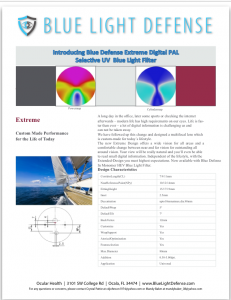
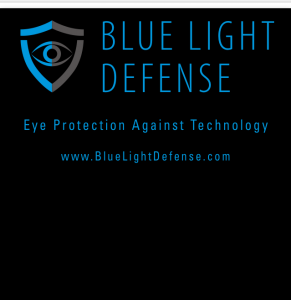

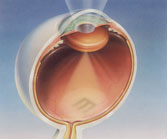

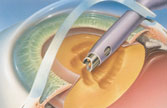

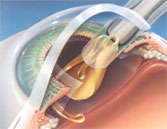
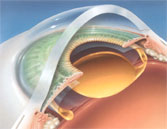



 Without Glasses?!! that is worth everything to me!
Without Glasses?!! that is worth everything to me!  Cataract surgery has undergone tremendous technological advances since the days of your parents and grandparents. This year, millions of patients will choose to have both their vision and their lifestyles restored, thanks to this life-changing medical procedure.
Cataract surgery has undergone tremendous technological advances since the days of your parents and grandparents. This year, millions of patients will choose to have both their vision and their lifestyles restored, thanks to this life-changing medical procedure.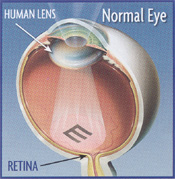 A cataract is a clouding of the natural lens inside your eye. This lens, located behind the iris (or colored part of the eye) works just like the lens of a camera – focusing light images on the retina, which sends the images to your brain.
A cataract is a clouding of the natural lens inside your eye. This lens, located behind the iris (or colored part of the eye) works just like the lens of a camera – focusing light images on the retina, which sends the images to your brain.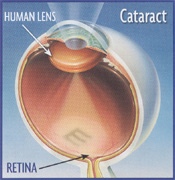 A cataract can be the reason sharp images become blurred, bright colors become dull, or seeing at night is more difficult. It may also be why the reading glasses or bifocals that used to help you read, or do other simple tasks, no longer seem to help. Unfortunately, cataracts can’t be prevented, but removing the cataract and replacing it with and artificial lens can restore your vision and in many ways, significantly improve your quality of life. The time to have your cataracts removed is when the quality of your vision begins to put limits on your activities and enjoyment of life.
A cataract can be the reason sharp images become blurred, bright colors become dull, or seeing at night is more difficult. It may also be why the reading glasses or bifocals that used to help you read, or do other simple tasks, no longer seem to help. Unfortunately, cataracts can’t be prevented, but removing the cataract and replacing it with and artificial lens can restore your vision and in many ways, significantly improve your quality of life. The time to have your cataracts removed is when the quality of your vision begins to put limits on your activities and enjoyment of life. 

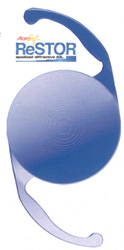 As with any surgical procedure there are inherent risks, and your results cannot be guaranteed. Your doctor will provide you with more detailed information about potential risks and benefits to help decide whether cataract surgery and the AcrySof® ReSTOR® IOL is right for you.
As with any surgical procedure there are inherent risks, and your results cannot be guaranteed. Your doctor will provide you with more detailed information about potential risks and benefits to help decide whether cataract surgery and the AcrySof® ReSTOR® IOL is right for you.